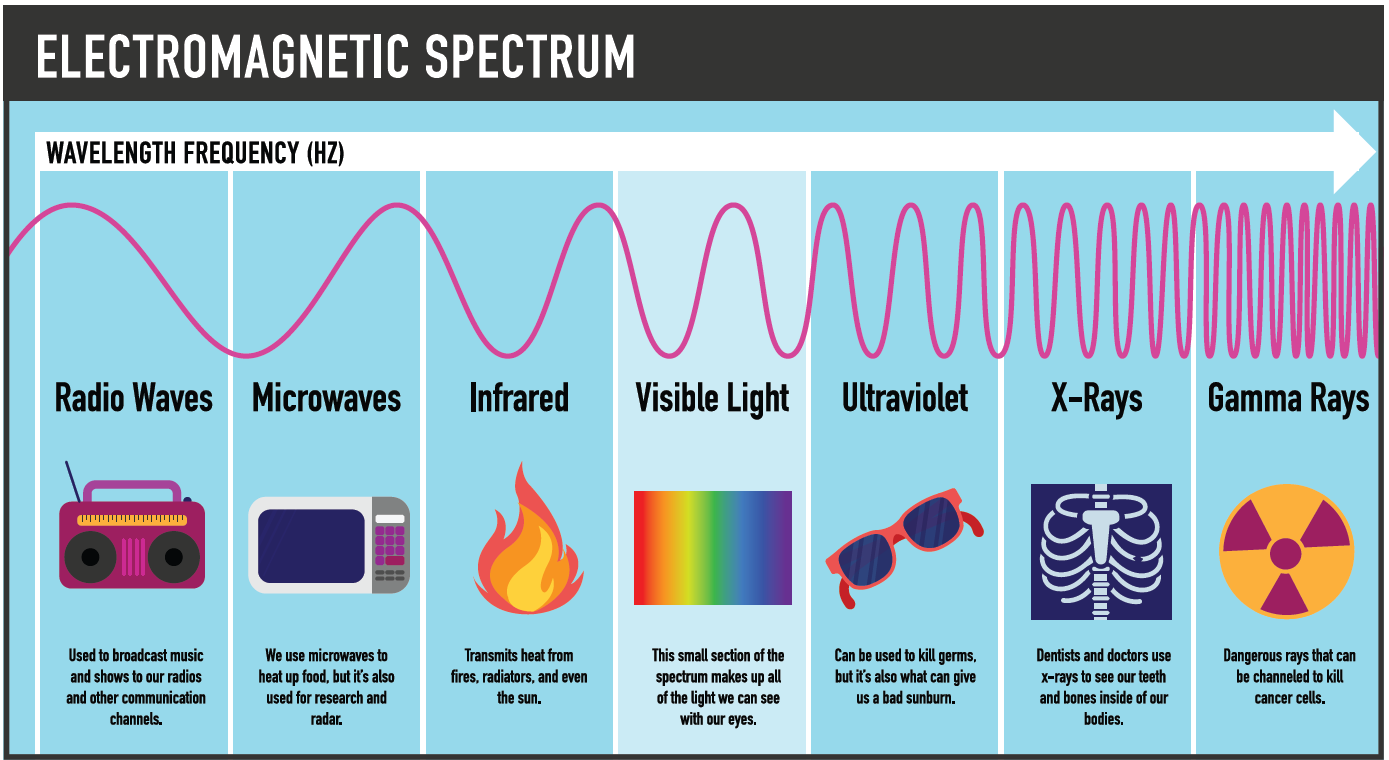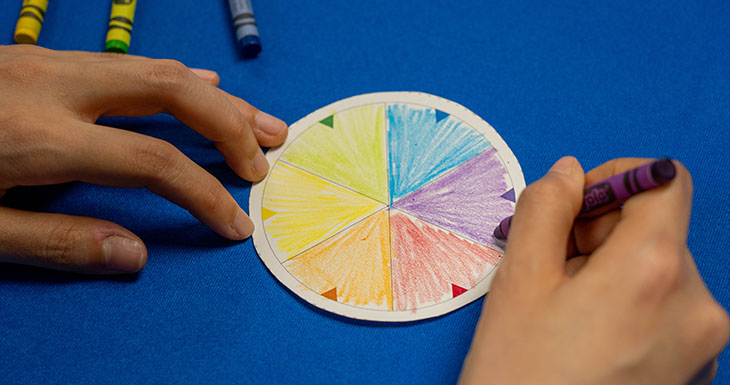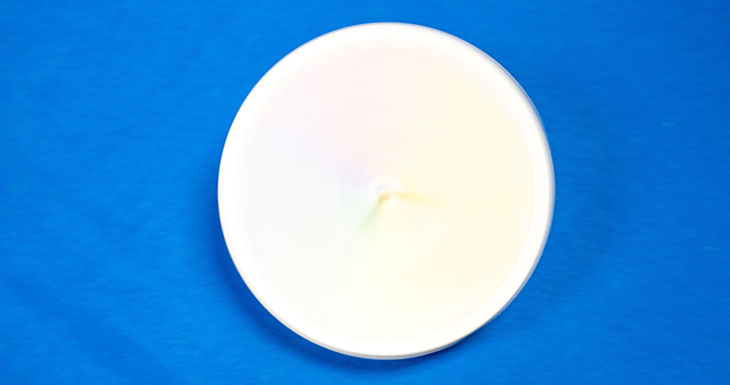In the 1660s, English physicist and mathematician Isaac Newton discovered that clear white light was composed of seven visible colors, the colors we see in a rainbow—red, orange, yellow, green, blue, indigo, and violet.

Johann Wolfgang von Goethe’s 1810 color wheel based on Newton’s findings.
Photo credits: Wikimedia Commons (public domain)
Newton’s work led to breakthroughs in optics, physics, chemistry, perception, and the study of color in nature.
Scientists learned that light is made from electromagnetic waves, generated by accelerating charged particles, such as electrons or protons. This acceleration creates oscillating electric and magnetic fields. The changing fields are what we perceive as light, with different wavelengths within the electromagnetic spectrum corresponding to different colors based on how they’re reflected or absorbed.
The sky is blue because sunlight scatters as it hits Earth’s atmosphere. Blue light, which has a shorter wavelength, is scattered more than other colors, causing the blue appearance.

The electromagnetic waves we see as light make up just a small slice of the electromagnetic spectrum, which also includes many invisible waves-- radio waves, microwaves, infrared and ultraviolet light, x-rays, and gamma rays.
At the MagLab, many of our scientists use lasers, which are focused intense beams of light, in their research, analyzing how light waves interact with a material to learn about its composition, behavior, and potential applications.
To demonstrate his discovery of the colors that make up visible light, Newton made his famous Color Wheel, also known as the disappearing color disk. When the disk with segments in rainbow colors is rotated, the colors fade to white.
Newton’s color wheel is very simple, and you can make one yourself.
Here’s everything you need and how to do it!
What You’ll Need:
- A circular paper disk, divided into six sections like a pie. You can make your own or print the one we’ve included here. Download our circular paper disk.
- A toothpick
- Tape and/or sticky dots
- Crayons
What You’ll Do:
1. Color each section of the disk in order of the color of the rainbow. Red, Orange, Yellow, Green, Blue, Violet. If you print out our disk, there are tiny triangles in the corner to show you the colors to use.

2. Carefully stick a toothpick through the hole in the middle of the disk.

3. Use a sticky dot and/or tape to secure the disk to the toothpick.

4. Use your thumb and finger on the toothpick to spin the disk like a top.

Watch the colors blend as they spin. What do you see?

Try spinning faster, then slower. How does that change what you see?
Try changing the order of the colors on a new disk. Does that make a difference?
Did you know?
- Light travels extremely fast, at about 186,000 miles per second. You will often see a flash of lightning from a thunderstorm, then hear thunder several seconds later. That’s because the light is traveling so much faster than the sound.
- Light can travel in a vacuum, such as outer space, unlike sound waves.
- Humans can’t see ultraviolet light, but some animals can, including bees, birds, and lizards.